THE BUSINESS TIMES News
In this issue
n Labor forecast
Employment is expected to continue to increase in Colorado in 2023, but at less than half the pace of 2022.

Employment is expected to continue to increase in Colorado in 2023, but at less than half the pace of 2022.
n Outlook for 2023: Mesa County well positioned for growth. Coverage starts on page 2
Construction has begun on a project to realign and make improvements to U.S. Highway 6 in Clifton.
The City of Grand Junction plans to conduct a survey as part of efforts to address issues related to homelessness.
A new grant program is designed to help Colorado communities expand their workforce development efforts.

Real estate sales continue to slow in Mesa County as higher interest rates and home prices affect affordability.
A public health emergency declaration has expanded, in turn adding to coverage to employees working in Colorado.
Mesa County is positioned for growth in 2023, according to the latest forecast compiled by the business research division of the Leeds School of Business at the University of Colorado at Boulder.

Mesa County is positioned for growth in 2023, according to the latest results of an annual business and economic forecast for the year ahead.
The mostly upbeat outlook is based in part on a more diversified economy with expected gains in the energy, manufacturing and tourism sectors. Economic indicators also point to improving conditions.
Here, at a glance, are some of the latest year-to-date economic indicators for the Grand Valley along with the proportional changes from the same periods in 2021:
s Average annual wages in Mesa County: $50,128 in the third quarter of 2022, up 4.4%.
s Foreclosure filings in Mesa County: 226 through November 2022, up 804%.
s Foreclosure sales in Mesa County: 44 through November 2022, up 144.5%.
s Lodging tax collections in Grand Junction: $4 million through October 2022, up 27%.

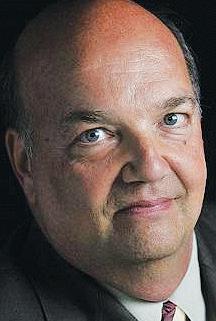
s Nonfarm payrolls in Mesa County: 75,947 in October 2022, up 1.8% from October 2021.
That’s not to mention the attraction of comparatively affordable housing and a high quality of life, says Rich Wobbekind, senior economist at the Leeds School of Business at the University of Colorado at Boulder. “It’s a place people would like to live.”
Wobbekind and Brian Lewandowski, executive director of the business research division of the Leeds School of Business, outlined the forecasts for Mesa County and Colorado in a Zoom interview with the Business Times.
Wobbekind also is scheduled to present the findings at a presentation hosted by the Grand Junction Area Chamber of Commerce. The economic outlook luncheon is set for noon to 1:30 p.m. Dec. 12 at the Mesa County Workforce Center located at 512 29 1/2 Road. Admission is $25 for chamber members, $30 for others. For reservations or information, call 242-3214 or visit http://gjchamber.org.
The division compiles the Colorado Business Economic
Outlook with sections for various industry sectors and geographic regions. Business, industry and government officials contribute to the report.
The section about Mesa County included contributions from Steve Jozefcyzk, deputy director of the Grand Junction Economic Partnership, and Nathan Perry, an economics professor at Colorado Mesa University. The section also included information from Bray & Co. Real Estate, the Grand Junction Regional Airport, Mesa County Workforce Center and Visit Grand Junction
t Passenger enplanements at the Grand Junction Regional Airport: 168,978 through September 2022, down 9.9%.
t Real estate sales dollar volume in Mesa County: $1.9 billion through November 2022, down 7.9%.
t Real estate transactions in Mesa County: 4,451 through November 2022, down 21%.
s Sales tax collections in Grand Junction: $53.7 miliion through October 2022, up 10.4%.
s Sales tax collections in Mesa County: $40.7 million through October 2022, up 10.8%.
t Seasonally unadjusted unemployment rate for Mesa County: 3.8% in October 2022, down 0.7 from October 2021.
Employment is expected to continue to increase in Colorado in 2023, but at less than half the pace of 2022.
Although the state boasts the second highest labor participation rate in the country, worker shortages likely will hamper employment growth, says Brian Lewandowski, executive director of the business research division of the Leeds School of Business at the University of Colorado.
According to the Colorado Business Economic Outlook the division prepared for 2023, nonfarm payrolls are projected to increase 57,100 — or 2 percent .

The increase is expected to build on what Lewandowski says was a good year in 2022 that enabled Colorado to recoup the jobs lost in 2020 because of the
COVID-19 pandemic and related restrictions.
However, the 2023 gain will be less half of what’s anticipated will be an increase of 120,800 jobs in 2022, he says.
Employment is forecast to grow in nine of 11 industry sectors in 2023. Professional and business services is expected to lead the way with 20,300 additional jobs. Employment is expected to increase 11,000 in leisure and hospitality; 6,400 in trade, transportation and utilities; 5,800 in education and health services; 4,100 in other services; 3,000 in natural resources; 1,400 in information and 500 in manufacturing. Moreover, government payrolls are projected to grow 10,600.
Employment is expected to decrease in two sectors,
Lewandowski says, with a loss of 4,000 jobs in financial services and 2,000 jobs in construction. He attributed those declines to the effects of higher interest rates and, in turn, slowing residential construction.
The Colorado population is expected to grow 55,500 in 2023 with an estimated net in-migration of 35,000. But labor shortages are likely to persist, he says.
The number of people who work multiple jobs — often in the retail and hospitality sectors — has decreased, he says.
In addition to labor shortages and higher interest rates, other possible economic headwinds expected to blow in 2023 include higher inflation and supply chain disruptions.

The Business Times
609 North Ave., Suite 5 Grand Junction, CO 81501 (970) 424-5133 www.thebusinesstimes.com



The Business Times is published twice monthly and distributed throughout Grand Junction, Fruita and Palisade.


Advertising rates and deadlines are available upon request. Opinions expressed in this publication are those of the writers and don’t necessarily reflect the views of the publisher, editor or advertisers.
Copyright © 2022 — All rights reserved
Construction is under way on improvements to U.S. Highway 6 in Clifton.
The Colorado Department of Transportation and United Companies, the contractor on the project, have begun work on U.S. Highway 6 just west of the intersection with the Interstate Highway 70 Business Loop.
The project will realign and update traffic patterns while adding two roundabouts, center medians and an eastbound lane.
Pedestrian and bicycle connections through the corridor also will also be improved.
Scheduled for completion in the fall of 2024, the project is designed to improve drivability for motorists as well as safety for pedestrians, including the nearly 400 children who attend nearby Clifton Elementary School.
Two lanes of the highway will remain during construction, as will access to local businesses.
There could be times, though, when motorists must use local streets to connect to the post office and businesses in the work zone.
Motorists should expect an additional
For more information about improvements to U.S. Highway 6 in Clifton, send an email to US6CliftonProject@gmail.com or log on to codot.gov/projects/ us-6-clifton-improvements.
10 minutes of travel time on both eastbound and westbound U.S. Highway 6 in Clifton. Access to side streets could be closed for short durations during construction.
This project is the third of three roadway improvement projects along the U.S. Highway 6 corridor through Mesa County during the 2022 construction season.
A resurfacing project on U.S. Highway 6 between Clifton and Palisade as well and Colorado Highway 141 between U.S. Highway 50 and the Colorado River bridge on Orchard Mesa was completed in May.
A resurfacing project on North Avenue from First Street to the Interstate 70 Business Loop through Grand Junction is close to completion.
F

The City of Grand Junction plans to expand 24 Road as the next phase of a longrunning effort to provide a loop that speeds travel through the Grand Valley.
“Moving freely around the city is one of the key measures of the community’s quality of life. Growth and subsequent traffic demands are increasing the need for additional capacity on our network of streets,” said Trent Prall, director of public works. “The completion of the loop will provide access to the interstate, shopping, industry, the riverfront, recreational opportunities and large residential portions of the valley.”
The city plans to widen the 24 Road corridor to five lanes in 2023. The expansion will include bike lanes, medians, streetlights and a sidewalk along the west side.
The Grand Junction City Council is scheduled to consider awarding a contract for the project at its Dec. 21 meeting. Construction is slated to begin in January and finish in April 2024.
For the past 25 years, Grand Junction and Mesa County have been working to bring the loop project to fruition which,


once complete, will have seen an investment of more than $250 million.
Some portions of the loop have been completed. The Riverside Parkway was finished in 2008 at an investment of $110 million, and 29 Road was improved from Patterson Road to the Riverside Parkway at a cost of more than $50 million.
The last remaining piece of the loop is a proposed 29 Road interchange with Interstate Highway 70, which will cost an estimated $70 million. Grand Junction and Mesa County continue to work with the Federal Highway Administration and Colorado Department of Transportation on environmental documentation, permitting and authorization for a new interchange.
The city’s comprehensive plan includes an efficient and connected transportation system as a key principle. City staff works to ensure the transportation network functions smoothly, addressing capacity and congestion issues. The city works with Mesa County and the Colorado Department of Transportation on multi-jurisdictional traffic management, signal optimization and construction.
Capital improvements are identified and prioritized through the city’s capital improvement plan as well as the Colorado Department of Transportation statewide transportation improvement plan.
F

Subscribe today to the journal that means business in the Grand Valley. (970) 424-5133 www.thebusinesstimes.com



A woman who’s long served in various roles with Colorado Gov. Jared Polis has been named executive director of the Colorado Office of Economic Development and International Trade.
Eve Lieberman is scheduled to start her new role Jan. 1. She’ll succeed Patrick Meyers, who will remain the state’s chief recovery officer.
Lieberman serves as the governor’s chief policy advisor and legislative counsel. She’s worked on efforts to help small businesses, lower the cost of health care and implement full-day kindergarten and universal preschool.
She previously worked 10 years in Congress, including a stint as chief of staff for Polis when he served as a U.S. representative from Colorado. She also helped manage the House Rules Committee portfolio.
Lieberman holds a political science degree from the University of Michigan and law degree from George Washington University Law School.
“We are thrilled Eve will be helping Colorado’s small businesses and entrepreneurs grow, innovate and expand into new markets while expanding our trade programs,” Polis said. “We are excited for what she will bring to the table to help keep Colorado economy thriving.”
Loren Furman, president and chief executive officer of the Colorado Chamber of Commerce, praised the move.

“Eve has helped ensure the governor and the business community worked on data-driven and balanced policy approaches to help businesses recover from the pandemic, focused on common sense ideas that help Colorado’s businesses and economy and ensured that Colorado has a seat at the table in Washington,” Furman said. “Eve will continue to deliver positive results for Colorado’s business community and the state in this new role.”
Meyers will continue to manage staff and compliance for the American Rescue Plan Act and Infrastructure Investment and Jobs Act in Colorado.
“We are grateful that he has agreed to remain on as chief recovery officer, ensuring that we will continue to save people money and deliver on our transformational investments in affordable housing, behavioral health, workforce development and economic recovery,” Polis said.

The City of Grand Junction plans to conduct a survey in December and use the results to address issues related to homelessness.
The city will partner with community service providers who’ve been trained to conduct surveys. Volunteers will work in pairs and asks respondents to select from a menu of choices. The goal is to survey at least 50 unhoused individuals.
The survey is scheduled to be completed by the end of December. Responses will be reviewed and analyzed. The results are scheduled for publication in the spring. City staff expect to use the results in developing strategies to address issues related to homelessness.
The survey was designed with three primary purposes:
n Gain an increased understanding of the characteristics and experiences of unhoused people in the Grand Junction area.
n Understand how individuals become homeless.
n Identify the barriers against exiting homelessness and obtaining housing.
The results of the survey also could help provide a platform of information to develop education strategies for use by city staff as well as business owners, local officials and residents.
The effort aligns with one of the principles of a city comprehensive plan to address the causes and impacts of homelessness while also providing supportive housing for the homeless population.
The effort also aligns with a city housing strategy that calls for financial support of existing housing and homelessness services. Survey results will be used in making funding decisions. F
An effort is under way to recruit 100 businesses to offer discounts to support foster families in Mesa County.

The Mesa County Department of Human Services joined with Ariel Clinical Services, Kin Connect Child Placement Agency, Project 1.27 and WhimSpire Structured Parenting in the Foster Friendly web and mobile application campaign.

The effort aims to create a community of support for children in foster care. Businesses sign up on the application and offer discounts for foster families and the youth in their care. Businesses will be listed on the app and also receive stickers and other materials identifying their participation.
For more information about the effort, log on to www.fosteradoptmesacounty.org/ fosterfriendly.





The initial application period will remain open through Jan. 24 for a new grant program designed to help Colorado communities expand workforce and talent development initiatives.
Colorado Gov. Jared Polis and the Colorado Office of Economic Development and International Trade announced the Opportunity Now Colorado program. “Our administration is committed to creating opportunities for Coloradans to get the skills they need to build careers they love,” Polis said. “We’re excited about the collaborative effort between the education and business communities, the opportunities that this new grant program will provide and how the grants will help build our workforce, create jobs and retain homegrown talent.”
Established by state legislation enacted in the latest session, Opportunity Now Colorado will help residents develop the skills and experience they need to apply for and secure jobs. State Rep. Janice Rich, R-Grand Junction, was among the lawmakers who pushed for passage.
State Rep. Julie McCluskie, a Democrat from Dillon selected to serve as speaker of the Colorado House next session, also was involved. “Opportunity Now Colorado provides the resources for communities to create programs that address worker shortages and provide workers with highwage, meaningful jobs. Through innovative, regional programs, we can foster on-the-job training, apprenticeships and other forms of training and education that help Coloradans and our state’s economy not only recover from the pandemic, but thrive,” she said.
Opportunity Now grants will support regional partnerships in which educational institutions, industry leaders and employers work together to meet current and future workforce development needs. Emphasis will be placed on programs that create intentional pathways between one phase of education or employment to another and foster opportunities for regional learners and earners to be more economically mobile.
“Opportunity Now will help Coloradans across the state develop new skills so they can transition into Colorado’s fastest growing industries,” said Patrick Meyers, executive director of the Colorado Office of Economic Development and International Trade. “When workers have the support they need to adapt to a changing economy, families, communities and the entire state of Colorado benefit.”

A $500,000 grant will help fund efforts to develop the Colorado workforce.
The Colorado Workforce Development Council announced it received the grant from Walmart to support the Advancing Individual Ownership of Assets and Career Determination initiative. The initiative will help job seekers more easily define and share their professional qualifications online with employers, access better data to select quality training providers and enroll in training that leads to employment in high-demand occupations. The initiative also will help employers identify workers with skills and credentials that meet their needs.
The effort will enable more Colorado residents — specifically those from historically marginalized populations — to obtain education and training to help them pursue careers and economic prosperity.

“We are excited to support these important efforts in Colorado as we collaborate across the workforce ecosystem to improve economic outcomes for workers,” said Sean Murphy, director of opportunity at Walmart.org. “We aim to increase equitable access to economic opportunity. Critical to that goal is ensuring that job seekers and workers can clearly and easily define their education, experiences and skills to prospective employers. This work in Colorado will help inform similar efforts nationwide.”
Digital infrastructure will enable any Colorado resident to access a learning and employment record — an online record that documents their skills, credentials, education and work experiences. Once the information is contained in a digital wallet, residents can authorize their information to be verified and shared across learning management systems, educational platforms, human resource systems and more.


The creation of a digital wallet will strengthen connections between employers in need of talent and workers with jobrelevant skills to ease hiring challenges and make hiring processes more efficient. One recent report estimated it costs an average of $4,700 and takes an average of 54 days to find new hires.
“Equipping individuals with digital records of their own verified skills puts the power of training and work decisions back in the hands of workers,” said Renise Walker, assistant director of systems innovation at the Colorado Workforce Development Council. “At the same time, it enables employers to make effective and informed hiring decisions based on the skills required to fill a position.”
Through a collaboration with Credential Engine, the initiative also will make it easier for Colorado residents to assess which training providers offer training.



A Grand Valley director and theater group will present a musical adaptation of “A Christmas Carol.”
Performances “A Christmas Carol — A Musical” are set for 7 p.m. Dec. 8 and 9 and 2 p.m. and 7 p.m. Dec. 10 at First Presbyterian Church, 3940 27 1/2 Road in Grand Junction.

The group will stage the show as a free holiday event for the community. But audience members are asked to make monetary donations to the Community Food Bank.
A cast of more than two dozen adults and children will perform in the production, retelling the Charles Dickens story about the transformation of the miserly Ebenezer Scrooge.
Joshua James, a local director and author, wrote the script as well as the music and lyrics for the production.
“We wanted to do something to give back to our community,” James said. “In ‘A Christmas Carol,’ Scrooge a stingy and cold-hearted man who despises Christmas discovers the true celebration of the season has everything to do with generosity, family and taking care of your fellow man. This show will no doubt get people into



For more information about “A Christmas Carol — A Musical,” visit the Facebook page located at www.bit.ly/ChristmasCarolGJ.
the holiday spirit and hopefully quell some bah humbugers out there.”
“A Christmas Carol — A Musical” first was performed in 2019. Most of the cast will return to reprise their roles in the latest production.
“We had not planned to wait so long to perform this show again. But with the pandemic, our plans were put on hold,” James said. “This cast is excited to get back on stage and dance and sing their hearts out. It’s a labor of love for all of us.”
James, his family and cast members will cover the expenses associated with the production.
“Life is all about helping your fellow man. We hope people will come out to enjoy the performance, take time to reflect on their life and get into the Christmas spirit,” James said.
F



Continued from page 2

Rich Wobbekind, senior economist at the Leeds School of Business, says there’s a risk of recession in 2023.
But even if the economy doesn’t contract, growth will be slow until interest rates and prices — including fuel prices — retreat, he says. “It’s a very slow growth scenario.”
Gross domestic product, the broad measure of goods and services produced in the country, is expected to grow 1.8 percent in the United States in 2022, but slow to a gain of just six-tenths of a percent in 2023.
Lewandowski says consumers have remained resilient and used savings and credit cards to maintain their lifestyles. But consumption could slow as inflation further erodes purchasing power.
Higher interest rates have slowed private investments, although government spending on infrastructure has increased, he says.
The strong value of the U.S. dollar compared to foreign currencies make U.S. goods and service more expensive and could dampen exports, he says.
Colorado will remain an economically competitive in 2023 with above average growth in GDP, income and employment, he says.
Professional and business services likely will lead the way with continued growth in the high-tech sector, Lewandowski says.
The leisure and hospitality sector sustained the biggest employment losses in the pandemic, but subsequently recovered. What’s projected as increases in travel, tourism and outdoor recreation will spur additional growth, although labor shortages could moderate growth, he says.
Increases in retail sales and air travel likewise will bolster the broad trade, transportation and utilities sector even as labor shortages remain a headwind.

Higher prices for crude oil and natural gas have helped the natural resources and mining sector. The total value of oil and gas production is expected to reach a record $25 billion in 2022.
While manufacturing in Colorado outperforms national growth for the sector, higher interest rates and inflation as well as slowing demand could pose challenges.
In the construction sector, residential building has slowed even as work on infrastructure has grown to record volume.
Drought remains a concern for the agriculture sector in 2023. While market prices have increased, so have the cost of fuel, fertilizer and other inputs. Net farm income is expected to fall to $772 million in 2023, the lowest level in 20 years.
Government payrolls have rebounded, but governments face the same challenges in labor shortages and increased costs. Federal spending will help the government sector remain stable in 2023. F



Continued from page 2
“We are seeing signs of our community continuing to thrive,” the forecast states. “The diversification of our business industries steadily grows, making Mesa County more resilient during times of nationwide downturn. Strong economic indicators continue to point toward the positive positioning of Mesa County for growth in 2023.”
Wobbekind and Lewandowsk say several trends bode well for Mesa County, including higher natural gas prices and projected increases in tourism. Moreover, the Mesa County population is expected to continue to grow as births outpace deaths
and more people move to the county. That helps fill the labor pool, Lewandowski says.
As of October, the latest month for which estimates are available, the seasonally unadjusted unemployment rate stood at 3.8 percent. That was up four-tenths of a point from September, but down seven-tenths of a point from October 2021.
Over the past year, Mesa County payrolls grew 1,378 — or 1.8 percent — to 75,947. The overall labor force, which includes the employed and unemployed, increased 801 to 78,921.
Mesa County was among the first counties in Colorado to recover the jobs
lost in early 2020 because of the COVID-19 pandemic and related restrictions.
The pandemic accelerated the trend of remote employers who relocated to Grand Junction, but work for companies located elsewhere.
According to an economic update from CMU, average annual wages rose 4.4 percent to $50,128 in 2022 compared to 2021.
New filings for Mesa County businesses are up 3.9 percent over last year.
In 2021, six additional companies in Mesa County were approved for the Rural Jump-Start program offering tax credits for creating new jobs. Two more companies could be approved by the end of 2022.

The Grand Junction Economic Partnership worked with four companies that relocated to Mesa County in 2022 and expects to announce five additional relocations.
West Star Aviation, one of the largest private sector employers in Mesa County, expects to expand its operations at the Grand Junction Regional Airport with the construction of a 40,000-square-foot hangar and another 35,000 square foot shop and office space. The company plans to hire 80 employees now and another 100 over the next few years.
Health care, the largest industry sector in Mesa County in terms of employment, continues to expand as well. Construction is under way on a 126,000-square-foot cancer center and medical office building at Community Hospital in Grand Junction as well as a health care clinic in Palisade.
In the energy sector, drilling rig counts have increased along with natural gas prices. But employment in oil and natural gas production declined from the fourth quarter of 2021 to the first quarter of 2022.
Sales tax collections, an indicator of retail activity, continue to trend upward.
The City of Grand Junction reported collecting almost $53.7 million in sales taxes through the first 10 months of 2022. That’s an increase of more than $5 million and 10.4 percent over the same span in 2021. Mesa County collected $40.7 million in sales taxes through the first 10 months of 2022, an increase of almost $4 million and 10.8 percent over the same span in 2021.
Lodging tax collections, a measure of hotel and motel stays, also have increased. The City of Grand Junction reported collecting nearly $4 million through the first 10 months of 2022, a 27 percent increase over the same span in 2021. Lodging tax collections for 2023 are projected to increase 9 percent above 2022.
The number of passengers boarding commercial flights at the Grand Junction Regional Airport has decreased in 2022 compared to a busy 2021 with the loss of a route between Grand Junction and Salt Lake City.
Higher mortgage interest rates and home prices have slowed the real estate market in Mesa County.
Through 11 months of 2022, 4,451 real estate transactions worth a total of more than $1.9 billion were reported. Compared to the same span in 2021, transactions decreased 21 percent and dollar volume fell 7.9 percent.
Home prices continue to rise, however. The median price of homes sold through 11 months of 2022 increased 16.7 percent to $385,000 compared to the same span in 2021.
Although housing prices have increased in Mesa County, Wobbekind says they remain below other areas of Colorado. That’s bolstered migration into the county, especially from the Front Range. The combination of big city amenities, outdoor recreational opportunities and high quality of life makes Mesa County an affordable and attractive place to live, he says.
s New business filings in Colorado, 43,657 in the third quarter, up 14.5 percent from the third quarter of 2021.
t Consumer Confidence Index 100.2 for November, down 2.
t Leeds Business Confidence Index for Colorado, 39.8 for the fourth quarter, down 1.3.
t National Federation of Independent Business Small Business Optimism Index 91.3 for October, down 0.8.
s Foreclosure filings in Mesa County, 18 in November, up from 3 in November 2021.
s Foreclosure sales in Mesa County, 3 in November, up from 0 in November 2021.
t Conference Board Employment Trends Index, 117.65 for November, down 1.09.
t Conference Board Leading Economic Index 114.9 for October, down 0.8%.
t Institute for Supply Management Purchasing Managers Index for manufacturing, 49% for November, down 1.2%.
t Lodging tax collections in Grand Junction, $488,019 for October, down 3.84% from October 2021.
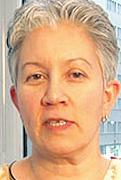
t Real estate transactions in Mesa County, 256 in November, down 41.8% from November 2021.
t Dollar volume of real estate transactions in Mesa County, $110.3 million in November, down 35.1% from November 2021.
s Sales and use tax collections in Grand Junction, $7 million for October, up 10.4% from October 2021.
s Sales and use tax collections in Mesa County, $4.7 million for October, up 8.6% from October 2021.
s Mesa County — 3.8% for October, up 0.4.
s Colorado — 3.6% for October, up 0.2.
n United States — 3.7% for November, unchanged.
Real estate activity continues to slow in Mesa County as a combination of higher interest rates and prices make homes less affordable for prospective buyers.
The story of the local market has changed, said Robert Bray, as mortgage interest rates and residential inventories have reversed roles. In nearly doubling, interest rates have gone from hero to villain. What were low inventories have nearly doubled, becoming something of a hero in offering more selection.
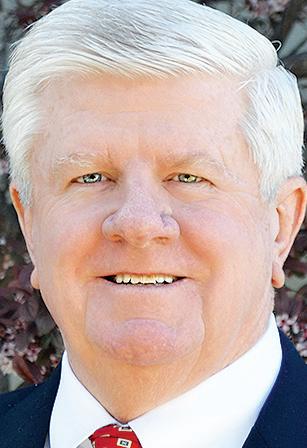
“Those two characters have switched places,” said Bray, chief executive officer of Bray & Co. Real Estate in Grand Junction.
Annette Young, administrative coordinator at Heritage Title Co. in Grand Junction, said there’s still an unfilled need for housing. But until interest rates and prices moderate, sales will slow. “The demand is still there, though. But, obviously, it’s got to be affordable.”
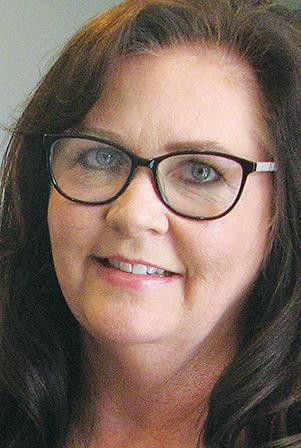
Young said 256 real estate transactions worth a combined $110.3 million were reported in Mesa County in November. Compared to the same month last year, transactions declined 41.8 percent and dollar volume dropped 35.1 percent. Those were some of the biggest year-over-year proportional declines since the Great Recession in 2008 and 2009, she said.
Eight large transactions accounted for a total of $17.6 million in November 2022, Young said. They included the sale of Monument Ridge Apartments on B 1/2 Road for $6 million, a medical office building on Wellington Avenue for $3.65 million and an industrial office building on River Road for $1.63 million.
Through the 11 months of 2022, 4,451 transactions worth a total of more than $1.9 billion were reported, Young said. Compared to the same span in 2021, transactions decreased 21 percent and dollar volume fell 7.9 percent.
Young said rising prices have long made homes less affordable,
but even more so recently because of higher mortgage interest rates. “Now you’ve added that on top of it.”
According to numbers Bray & Co. tracks for the residential market in Mesa County, 181 transactions worth a total of nearly $76.6 million were reported in November. Compared to the same month last year, transactions fell 43.3 percent and dollar volume declined 40.1 percent.
Through 11 months of 2022, 3,076 transactions worth a total of more than $1.3 billion were reported. Compared to the same span in 2021, transactions decreased 18.8 percent and dollar volume retreated 5.9 percent.
The effects of an increase in mortgage interest rates from 3 percent to more than 6 percent have been dramatic, Bray said.
Home prices continue to increase. The median price of homes sold through 11 months of 2022 increased 16.7 percent to $385,000 compared to the same span in 2021. Bray expects the pace of appreciation to change, however. “It’s got to start slowing.”
One indicator could be a decline in the proportion of home sales in which the sellers received list price — 97.3 percent in November compared to 98.8 percent the same month last year.
One result of slowing activity has been an increase in residential inventory. At the end of November, there were 586 active listings in Mesa County. That’s an increase of nearly 90 percent from a year ago that offers more selection to buyers, Bray said.
New home construction continues to lag, however, in part because of growing uncertainty among builders and the bankers who lend them money, Bray said. Through 11 months of 2022, 682 permits for single-family homes were issued in Mesa County. That’s down 21 percent from the same span in 2021.
Bray and Young both said they expect the market to rebound when interest rates and prices moderate. But that might not occur for another six months to a year or more.
Property foreclosure activity continues to increase, Young said. Through 11 month of 2022, 226 foreclosure filings and 44 sales were reported. That contrasts with 25 filings and 18 sales for the same span in 2021. Foreclosure activity could increase further as more loans come out of forbearance, but Young said she doesn’t consider the numbers alarming.
F
A measure of consumer confidence continues to retreat on less optimistic assessments of business and labor conditions that could signal recession.
The Conference Board reported its Consumer Confidence Index fell two points to 100.2 in November. Components of the index tracking the current situation and short-term expectations declined.
Lynn Franco, senior director of economic indicators at the Conference Board, said the declines reflect a number of factors.
“The Present Situation Index moderated further and continues to suggest the economy has lost momentum as the year winds down,” Franco said. “Consumers’ expectations regarding the short-term outlook remained gloomy.”
Inflation and higher prices for gasoline and food dampened plans to purchase homes, automobiles and appliances, she said. “The combination of inflation and interest rate hikes will continue to pose challenges to confidence and economic growth into early 2023.”
The Conference Board, a think tank based in New York, bases the Consumer Confidence Index on the results of monthly household surveys. Economists monitor the index because consumer spending accounts for more than two-thirds of economic activity.
Less upbeat assessments of current conditions pulled down the Present Situation Index 1.3 points to 137.4.
The proportion of consumers responding to the survey upon which the November index was based who described business conditions as “good” rose a half point to 18.2 percent. But the share of those who said conditions were “bad” rose more — 2.7 points to 26.7 percent.
The proportion of those who said jobs were “plentiful” rose a point to 45.8 percent. The share of those who said jobs were “hard to get” remained unchanged at 13 percent.
Less optimistic outlooks pulled down the Expectations Index 2.5 points. At 75.4, the latest reading signals the increased likelihood of a recession, Franco said.
The share of consumers who expected business conditions to improve over the next six months increased three-tenths of a point to 19.9 percent. The proportion of those who anticipated worsening conditions decreased 1.6 points to 22.7 percent.
The share of those who expected more jobs to become available in coming months fell nine-tenths of a point to 18.6 percent. The proportion of those who anticipated fewer jobs rose six-tenths of a point to 21.4 percent.
While 17.2 percent of consumers expected their incomes to increase, 16.6 percent anticipated decreases.
Payrolls continue to increase in the United States, but at a slowing pace.
Nonfarm payrolls grew 263,000 in November and the national unemployment rate held steady at 3.7 percent, according to the latest estimates from the U.S. Bureau of Labor Statistics.
The payroll gain for October was revised upward 23,000 to 284,000. But the gain for September was revised downward 46,000 to 269,000.
With the latest numbers, payrolls have increased an average of 392,000 a month so far in 2022. But gains have averaged only 282,000 over the previous three months.
For November, 6 million people were counted among those unsuccessfully looking for work. Of those, 1.2 million have been out of work 27 weeks or longer. Another 3.7 million people were counted among those working part-time because their hours were
cut or they were unable to find full-time positions.


The labor force participation rate edged down a tenth of a point to 62.1 percent, still below the rate before the onset of the COVID-19 pandemic in early 2020.
Payroll gains for November were spread out among industry sectors. Employment increased 88,000 in leisure and hospitality 45,000 in health care, 23,000 in social assistance and 20,000 in construction. Government payrolls grew 42,000.
Employed declined 30,000 in retail trades.
The average workweek slipped a tenth of an hour to 34.4 hours. The manufacturing workweek shortened two-tenths of an hour to 40.2 hours.

Average hourly earnings rose 18 cents to $32.82. Over the past year, hourly earnings increased 5.1 percent.
F
A monthly index tracking labor trends in the United States continues to decline, forecasting slower job growth.
The Conference Board reported its Employment Trends Index fell 1.09 points to 117.65 in November. Six of eight components of the index retreated.
“While the index remains at a high level, it’s downward trend signals slower job growth ahead,” said Frank Steemers, senior economist at the Conference Board. F
n The Young Professionals Network of Mesa County has scheduled its annual Christmas party and a lunch conversation.
The party is set for 6 to 8 p.m. Dec. 9 in the lobby of the Springhill Suites, located at 236 Main St. in downtown Grand Junction. Appetizers and the first drink will be free.
A lunch conversation is scheduled for noon to 1 p.m. Dec. 14 at Reverent Rhythms, 3080 Hoover Drive. The event will feature Cameron Cunningham, founder of the Reverent Rhythms performing arts company in Grand Junction.
For more information about the YPN and upcoming events, visit www.ypnmc.org.
n The Business Incubator Center in Grand Junction has scheduled a presentation on bookkeeping.
The next bookkeeping boot camp is set for 9 a.m. to 2 p.m. Dec. 13 at the center, 2591 Legacy Way. Participants will learn how to set up and track business accounting records and gain more control over their businesses through the preparation of balance sheets, cash flow projections and income statements. Tuition is $75, which also includes lunch.
For additional information about upcoming events, programs and services at the Business Incubator Center, call 243-5242 or visit the center website located at https://gjincubator.org.
n The Western Colorado Human Resource Association has scheduled its end-of-the-year celebration.
The celebration is set for 3:30 to 6:30 p.m. Dec. 14 at the Venue at Fisher’s — located at 625 24 1/2 Road in Grand Junction — and will include beverages, hors d’oeuvres and networking. WCHRA members may attend at no additional charge. Others will pay $10.
To register or obtain more information, log on to www.wchra.org.

n Upcoming sessions of the Coffee Club free networking meetings are set for 9 to 10 a.m. Dec. 16 and Jan. 20 at the FWorks coworking space, 325 E. Aspen Ave. in Fruita. For additional information about upcoming meetings, log on to https://gjincubator.org or https://fruitachamber.org.
It seems like just yesterday employers approached the end of 2020 hopeful 2021 would be better than the year before. But here we are two years later approaching the third year of a public health emergency in Colorado related to the COVID-19 pandemic. On. Nov. 11, Gov. Jared Polis issued an executive order expanding the public health emergency declaration.
Executive Order D 2022 044 amends Executive Order D 2021 122, which went into effect July 8, 2021 and focused on the recovery from the COVID-19 pandemic emergency.
Executive Order D 2021 122 in turn amended the original Executive Order D 2020 003 that first established the COVID-19 public health emergency.
has flu or RSV rather than COVID. The expansion beyond COVID doesn’t give employees an extra 80 hours for those conditions, it just means they can use their 80 hours for a broader range of conditions.”
Dean HarrisThe new executive order expands the existing disaster emergency to include respiratory syncytial virus (RSV), influenza and other respiratory illnesses due to serious increases in infections and hospitalizations throughout the state. This isn’t a new public health emergency. It simply expands coverage of the public health emergency that’s existed in one form or another for nearly three years.
The expanded public health emergency allows an employee to take any remaining public health emergency leave (PHEL) for the following reasons:
n Symptoms of COVID, flu, RSV or other respiratory illnesses.
n Quarantining or isolation due to exposure.
n Testing for COVID or similar respiratory illnesses.
n Vaccinations and their side effects.
n Inability to work due to health conditions that could increase susceptibility or risk of COVID, flu, RSV or similar respiratory illnesses.
n Care for family for illness, school closures and other reasons.
The expanded rule doesn’t require employers to grant new PHEL time. It only allows employees to use what they didn’t already use for COVID-related reasons.
The Colorado Department of Labor and Employment explained in a Nov. 11 news release: “Those with flu or RSV symptoms already were likely covered as having COVID symptoms — so a key impact of this expansion may be that coverage remains even if testing confirms someone
That raises the question of how the supplemental leave is calculated. Many employers operated under the mistaken understanding the Colorado Healthy Families and Workplaces Act (HFWA) required employers to award a new bank of 80 hours for PHEL in addition to other paid leave available for sicknesses. In fact, the HFWA, the regulations to the HFWA and original CDLE INFO 6B all required employers to provide a supplement sufficient, when combined with other paid leave, to allow up to a total of 80 hours for PHEL. The supplement was to be calculated on Jan. 1, 2021, or the date of the employee’s hire, whichever occurred later. If employees subsequently used non-PHEL for non-PHEL related purposes, the employer was not required to provide additional PHEL.
Unfortunately, the most recent version of INFO 6B provides that the supplement is determined by “supplementing the employee’s unused, accrued leave at the time of the request with enough PHE leave to ensure the employee can take” 80 hours of leave for full-time employees or an amount determined by formula for part-time employees.
Whether an employer chooses to follow the statute and regulation or the latest CDLE guidance document, those employers who generously, even if mistakenly, provided a separate new award of 80 hours of PHEL to employees face no dilemma. Those who followed the HFWA and its previous guidance are left scratching their heads, along with employment lawyers trying to resolve this situation. Most employers could find the difference between the calculation using the earlier date or the date of the leave request too small to fight over. But employers seeking to resolve the question of what PHEL must be provided should discuss the matter with an employment attorney. Employers Council attorneys are available to advise enterprise and consulting members on this and other employment matters for no additional fees.
Dean Harris is the Western Slope Area managing attorney for the Employers Council. The Employers Council counsels, represents and trains member employers in all phases of employment relationships. Contact Harris at dharris@employerscouncil.org or (970) 852-0190.
F

The efficient, effective and smooth flow of information is critical to consistently meet and exceed the wants and needs of customers, foresee challenges and opportunities and overcome obstacles. It’s also essential to the production and delivery of high-quality goods and services in a timely manner.
When communication is limited or even impossible because of personality conflicts, businesses weaken from within and the effects become far reaching.
Personality conflicts hurt businesses by contributing to a decline in collaboration, communication, morale, teamwork and trust. In turn, culture, efficiency, productivity, growth, profits and team member retention and satisfaction all suffer.
collaboration and trust necessary in highly functional teams.
n Resistance: When in resistance mode, team members overtly defy the demands, directions, desires and even suggestions of the people with which they conflict. They might even demonstrate spiteful actions intended to get back at or push the other person’s buttons. This type of behavior isn’t part of a successful team.

n Arguing: This behavior is the antithesis of effective communication and collaboration and hinders environments where team members perform at peak levels. Arguments and aggressive disagreements disrupt operations, send negativity rippling throughout the business and damage morale and company culture.
with a qualified professional, team members learn to take responsibility for their attitudes and corresponding behaviors and then correct them to create a more positive and collaborative work environment.
Another option for reducing personality conflicts is to proactively hire for not only skills, but also attitude and emotional intelligence. Through the use of accurate assessments that measure these attributes of the team members you bring into your business, personality conflicts can be diminished from the outset.
Marcus StraubThe degree to which team members don’t communicate effectively and collaborate constitutes one of the greatest obstacles to business success.
It’s important for business owners and managers to remain aware of negative behaviors that result from personality conflicts and address them early and effectively to keep collaboration, communication, morale and teamwork at consistently high levels.
Do you recognize any or all of these sabotaging behaviors in your business?
n Verbal sabotage: Gossip and snide or edgy comments are common when there are a personality conflicts between team members. This damages the work environment and has no place in a powerful business model.
n Avoidance: Some people choose avoidance to cope with personality conflicts. While this might offer a quieter and more discreet way of dealing with the situation, it’s not effective in fostering the high levels of communication,
If you recognize some or all of these behaviors in yourself or your team members, it’s important to realize the tremendous drag they exert on the operations, profitability and resources of your company. When top talent and customers are lost as a result of these conflicts, it’s already gone too far. Given the overwhelming downside personality conflicts bring to a business, it’s imperative to discover, address and overcome them as quickly as possible.
Many personality conflicts arise out of unconscious habits and tendencies that exist within each team member. Sometimes, these habits can be corrected by simply drawing attention to the damaging behaviors in which team members engage and making it clear they’re not acceptable.
Team trainings based on accurate assessment results and designed to help people understand themselves and others — their similarities and differences — and teach participants how to effectively communicate with various behavioral types are invaluable. With greater understanding and acceptance of each other and enhanced communication skills, personality conflicts are significantly reduced.
Effective coaching helps people become fully aware of the situations at hand and their roles in them. By working

Sometimes, team members insist on perpetuating conflicts and refuse to put aside their differences. In these instances, the wisest choice is to let them go. Anytime you reduce negativity and tension in the workplace, you improve the satisfaction level of the team and, in turn, customer service and profitability.
A well-designed team working together in a culture free of personality conflicts delivers the best possible experience to customers. We’re all unique and won’t always agree. However, when strategic investments are made to help team members better understand themselves and others, acceptance of differences become easier and communication and teamwork become the norm.

Marcus Straub owns Life is Great Coaching in Grand Junction. His personalized coaching and consulting services help individuals, business owners, executives and companies build teams, organizations and lives filled with happiness and success. Straub is winner of the International Coach of the Year Award and author of “Is It Fun Being You?” He’s available for free consultations regarding coaching, speaking and trainings. Reach Straub at 208-3150, marcus@ligcoaching.com or through the website located at www.ligcoaching.com. F

The Family Medical Leave and Insurance (FAMLI) program goes into effect Jan. 1, and the first premiums are due April 1.
According to the website at https://famli. colorado.gov, My FAMLI+Employer offers an online employer services portal Colorado businesses, third-party administrators and local government employers must use to manage FAMLI accounts. My FAMLI+Employer will operate similarly to My UI Employer, allowing employers to eventually report wage data, remit premium payments, apply for exemptions with private plans and upload letters of declination.
The FAMLI program is funded through premiums paid by workers and employers — depending on how many employees the business has. Employers collect workers’ shares through payroll deductions. Most workers will see a FAMLI deduction coming out of their paychecks starting in January. The employee share of FAMLI premiums is set at 0.45 percent of employee wages through 2024. Employers pay premiums based on employee wages up to the federal Social Security wage cap — $160,200 for earnings in 2023. Employee benefits are calculated on a sliding scale using an individual’s average weekly wage from the previous five calendar quarters in relation to the average weekly wage for the state of Colorado ($1,350.55 as of July 2022) and could increase over time.
If you have nine or fewer employees, there’s generally not an employer contribution. If you have 10 or more employees, you contribute 0.45 percent of their wages up to the Social Security cap. Some organizations aren’t eligible for FAMLI.
Starting in January 2024, most Colorado workers will be able to apply for FAMLI leave benefits to help them get through the following circumstances:
n Caring for a new child during the first year after the birth, adoption or foster care placement of that child.
n Caring for family members with serious health conditions.
n Caring for their own serious health conditions.
n Arranging for a family member’s military deployment.
n Obtaining safe housing, care and legal assistance in response to intimate partner violence, stalking, sexual assault or sexual abuse.
Starting in 2024, paid family and medical leave benefits will be available to most Colorado workers who’ve earned $2,500 over the previous year for work performed in Colorado.
Covered employees are entitled to up to 12 weeks of paid family and medical leave per year. Individuals with serious health conditions caused by pregnancy or childbirth complications could be entitled to up to four more weeks of paid leave per year for a total of 16 weeks. FAMLI leave may be taken continuously, intermittently or in the form of a reduced work schedule.
The Colorado FAMLI Act runs concurrently with the Federal Family and Medical Leave Act (FMLA).
Employees apply to the FAMLI division for benefits.
Employers must post a notice by Jan. 1 to inform workers about the FAMLI program. The required notice is available as a poster to download from the employer toolkit at https://famli. colorado.gov/employers/famli-toolkit-for-employers. The notice must be displayed in a prominent location in workplaces.
FAMLI program rules and other information are available at https://famli.colorado.gov/proposed/adopted-rules. Not sure how, or if, FAMLI requirements affect your business? If you can’t find what you need online, check with a benefits third-party administrator, payroll manager, tax advisor or service provider like the Employers Council.
Janet Arrowood is founder and managing director of the Write Source, a Grand Junction firm offering a range of services, including grant and proposal writing, instruction and technical writing. Reach her at janet.arrowood@thewritesourceinc.com. For more information, log on to www.TheWriteSourceInc.com. F

(970) 424-5133 www.thebusinesstimes.com


“With the kids jingle belling and everyone telling you be of good cheer. It’s the most wonderful time of the year.”
But what if it isn’t? According to the National Alliance on Mental Illness, 64 percent of those living with a form of mental illness report their conditions worsen around the holidays. In addition, some people experience seasonal affective disorder, a clinical depression that appears in late fall and can continue until spring with shorter days, less sunlight and colder weather.
Kelly Murphy
Mental illnesses and depression during the holidays can be attributed to a variety causes:
n Unhappy childhood memories.
n Stressful familial relationships or situations.
n Disappointment over what’s perceived as a lack of progress.
n Lowered immune defenses related to colder temperatures, eating less nutritious foods and sleeping less.
n Financial stress brought on by high inflation, increased demands on resources and expectations for gifts.
One of the most important things for employers to recognize is the increased financial stress employees face. There are ways, though, for employees to alleviate stress:
n Make sure everyone on the “nice” list deserves to be there. Do they all need an expensive gift? Many people enjoy a heartfelt gift instead of a gift they squirrel away or re-gift.
n Set realistic limits and don’t apologize. Write down a dollar limit for each person, stick to those limits and track how much you actually spend.
According to the results of one recent survey, 42 percent of employees reported trouble sleeping and feeling less interested in socializing. Think about how that affects their moods and engagement. Fully 33 percent of employees reported consuming more alcohol or using other substances more than usual to cope with stress.
n Buy in bulk when possible. A case of wine or elegant candles are great ideas.
n Be honest with friends and family about scaling back. Ask about a gift exchange instead of buying gifts for everyone. They’ll probably thank you for the suggestion.
What about the obligations associated with family and friends? Some people have perfected their abilities to make others feel guilty. But don’t feel you must meet all family or friend obligations. Don’t do something because it’s considered a tradition, especially if it makes you unhappy. Perhaps it’s someone else’s turn to host the family gathering.
Experiencing the opposite is just as stressful, especially if family and friends live far away. In this case, establish new traditions — such as volunteering, especially if you feel lonely.
Helping employees navigate the holidays offers some tangible benefits in the workplace.

According to the results of one survey, 42 percent of employees reported trouble sleeping and feeling less interested in socializing. Think about how that affects their
moods and engagement. Fully 33 percent of employees reported consuming more alcohol or using other substances more than usual to cope with stress.
Supporting employees reflects a commitment to them. Consider these suggestions this holiday season and see if it makes a difference:
n Find reasons to check in with your employees on a regular basis and simply ask “Are you OK?” The best way to help employees is to encourage dialogue. Whether they engage or not, they know someone cares.
n Ask what kind of support would be helpful to employees and remind them your door remains open if they’d like to talk. Schedule some onsite time with your employee assistance program partners for easy access.
n Don’t forget remote workers. Set up some virtual holiday gatherings — ugly sweater and trivia contests or sharing favorite recipes.
n Remember your employees are more apt to be distracted during the holidays. Discuss expectations about workloads and clarify any modified work hours and norms more often without a punitive tone.
Each employee is as unique as a snowflake. They face different situations with different levels of emotional intelligence. Remain sensitive to the fact some employees may carry on as usual during the holidays even as others struggle. Respect the confidentiality of all.
We might not be able to make it the most wonderful time of the year. But if we all come together this holiday season, we might make things more merry and bright.
Kelly Murphy works as a senior human resource business partner at Lighthouse HR Support in Grand Junction. Karen Zimmerman works as an HR supervisor and consultant at the firm. Lighthouse HR Support offers a range of human resource management services to small and medium-sized businesses. For more information, call 243-7789 or log on to www.lighthousehrs.net. F
As defined by the Colorado Department of Regulatory Agencies, title insurance protects from past events related to the ownership of property. Title insurance also helps to ensure the seller can transfer the title to you and offer protection if a problem with the title arises after you buy or refinance property. Unlike other kinds of policies that insure against unforeseen future events, title policies insure against past events affecting the rights to real property. For a single premium, the title policy provides protection as long as the buyer owns the property. The premium depends on the type of coverage you or your lender request.
n Why is title insurance important? Title insurance is recommended on any home no matter how new or apparently secure.The land the house is built on likely has had many previous owners. Claims against any former owners can be filed against the property and present owner. Fraud, missing heirs, old liens and other hazards can materialize like ghosts out of the past. Title insurance protects the current owner against these claims and title defects. A title insurance policy is your shield of protection and will defend current ownership against loss as outlined by the policy. Its protection and peace of mind last as long as the current owners and their heirs remain in ownership.
n Who’s covered? There are two basic title insurance
Fraud, missing heirs, old liens and other hazards can materialize like ghosts out of the past. Title insurance protects the current owner against these claims and title defects. A title insurance policy is your shield against loss.
policies: an owner’s policy and lender’s policy. Owner’s title insurance is generally issued for the purchase price. It protects purchasers and their heirs as long as they own the property. Lenders’ title insurance is often required as security for their investments in properties. The borrower typically pays for the lender’s policy, which is issued for the loan amount.
n How does a title company eliminate risk? An essential part of the title insurance process is eliminating risk before insuring, reducing the possibility of claim or loss. Title insurers examine a property’s public records, looking for matters affecting the title to the real property. These records include assessments, civil and probate court records, debt and other burdens, deeds, easements, maintenance agreements and restrictions to the property.
n What are some hidden hazards? Even the most careful examination can’t disclose hidden hazards to the title. Hidden hazards can emerge after the completion of a real estate purchase, creating an unpleasant and sometimes costly surprise. Some examples include deeds executed
under expired or fabricated powers of attorney or by people with unsound minds, fraud, forged documents, gaps in the chain of title, invalid divorces, mistakes in public records and undisclosed heirs claiming an interest in the property. While many of these hidden hazards might not be revealed by routine title examination, they still could be covered under the terms of a title insurance policy.
n When and how is a title insurance process initiated? A commitment for title insurance contains the conditions under which the title company issues a particular type of title insurance policy. Shortly after escrow is opened, the title company will begin producing the commitment for title insurance. This process calls for the assembly and review of certain recorded matters relative to both property and the parties to the transactions. Examples of recorded matters include a deed of trust recorded against the property and parties to the transactions. These recorded matters are listed numerically as requirements and exceptions in the title commitment. However, they will remain exceptions from title insurance coverage unless eliminated or released before the transfer of title.
Tammy Flesher is an escrow officer with Guaranteed Title Group in Grand Junction. She’s handled real estate transactions in the Grand Valley for more than 20 years. Guaranteed Title Group employs experienced title officers and escrow officers across Colorado. In Grand Junction, Guaranteed Title Group provides Western Colorado clients access to customer service and seamless communication throughout the home buying process. For more information, visit https://gtgroupllc.com.

What is title insurance and why is it important for those who buy and sell property?

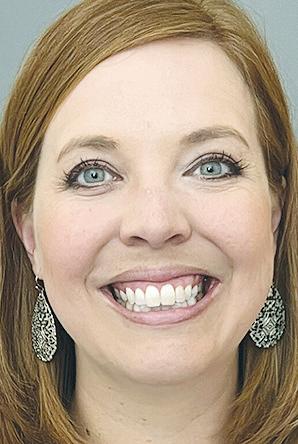
Monument Health experienced a big year, and we loved celebrating our partnerships at a recent networking reception.
We’re nothing without our partners. Our entire business model is predicated around convening different stakeholders to work toward the common goals of better health care affordability, outcomes and quality. The phenomenal showing of people who came to the event validated the work we’re doing to build strong partnerships.
As we close out 2022, we’re gearing up for a truly impactful 2023.
We now support all populations in the community — commercial, Medicare and Medicaid — and adapt our programs and approaches to the unique needs of each. Our growth is no accident. Our team works toward a goal of achieving true population health by helping all types of patients on the Western Slope. I’m proud of the fact we’re more than well on our way.
Our employer relationships have grown this year — most notably with our renewed and deepened partnership with Mesa County School District 51. We’re honored by the trust the school district has placed in our team and look forward to supporting the district over the next several
years. We’re also grateful for our long-term employer partners like Family Health West, Hilltop Community Resources, St. Mary’s Medical Center and West Star Aviation. Hilltop was one of the first employer groups to say yes to Monument Health, and we’re proud of the work we continue to do to support the health and wellness of Hilltop employees.
We also added a wellness platform this year, which enabled us to expand our scope into wellbeing initiatives with our employer partners. We established some new relationships, too, including one with the Roaring Fork Transit Authority.
We welcomed a number of new health care providers to the network and are at almost 100 percent network adequacy for Mesa and Delta counties, which is no small feat. We rolled out a new provider scorecard for primary care and are powering that via more than 2.6 million claims we receive every month plus robust medical records from our partner
Quality Health Network. We’re working on designing some pretty sophisticated approaches to our clinical programs and are excited about that.
For the year ahead, we’ll begin wrapping our arms around multiple government programs. We’ll launch a Medicare shared savings program in collaboration with other Intermountain-backed networks in Denver and Montana. This will enable us to take a multi-state, regional approach to better serving Medicare patients.
We’re also gearing up to begin support of Medicaid and Children’s Health Plan plus in Western Colorado in partnership with Rocky Mountain Health Plans. This is an exciting and meaningful opportunity we have in front of us to serve this population.
The work Monument Health has done in the past year would not be possible without an awesome team — including clinicians, providers, hospitals and insurance companies — that continues to lead the charge and think outside the box about ways to improve health care on the Western Slope. Here’s to meaningful partnerships and an impactful 2023.
Ashley Thurow is executive director of Monument Health, a clinically integrated network based in Grand Junction serving 23,000 members across Western Colorado. For more information about Monument Health, visit www.monumenthealth.net.
F

Mesa County has released the highly anticipated results of the Tell Us community survey. More than 1,200 residents completed the survey over the summer and provided valuable feedback.
The survey asked residents about their perceptions of county programs and services as well as their community priorities.
For local businesses, the results provide an opportunity to see what’s important to the community. That’s helpful in developing strategies and messaging.
The top community priorities determined by the survey results include efforts to improve the K-12 education system, promote public safety and plan for infrastructure development to maintain quality of life. Other priorities include creating opportunities for family economic stability, helping local businesses grow, improving transportation infrastructure, encouraging diverse employment opportunities and improving broadband connectivity.
Overall, the survey results confirmed the vast majority of the community agrees Mesa County is a good place to live. Satisfaction with the quality of life in Mesa County is most strongly affected by income. As income levels increased, so did satisfaction.
Notably, the overall satisfaction level of survey respondents with annual incomes between $35,000 and $50,000 was the same as those with incomes of less than $35,000. That could be an indicator of the success of assistance and support programs in improving quality of life for those making less than $35,000. Without those social supports, the satisfaction responses from this group likely would have been lower.

One key concern for citizens is access to quality child care. The survey results emphasized how important it is for businesses to think about how the lack of child care can affect the available workforce.
Parents are a core part of the workforce in Mesa County, which makes child care essential to the economy. Stable child care can lead to the success of businesses and the community as a whole.
In addition to child care, residents also identified affordable housing as another priority and called for more mental health providers and substance abuse programs.
There was overwhelming support as well for growth in the home internet sector.
Communication was a key topic in the Tell Us survey. Most residents indicated they prefer the county website and Facebook page as their top means of communication. Emails and direct mail could be beneficial as well.
Focusing on these platforms could provide local businesses with ways to improve their own connections to customers and employees.
To increase satisfaction with Mesa County as a place to work, survey results indicated there should be a focus on growing local businesses and diverse employment opportunities. Companies could use these results to their advantage in developing those sectors residents perceive as lacking. Moreover, companies could shape their messaging to focus on priorities for customers and employees.
Businesses play a critical role in the community. The survey results could serve as a map that leads to changes that benefit everyone.
Sarah Gray is a communication specialist with Mesa County Public Health. For additional information, call 248-6900 or visit https://health.mesacounty.us. F
Our entire business model is predicated around convening different stakeholders to work toward the common goals of better health care affordability, outcomes and quality.

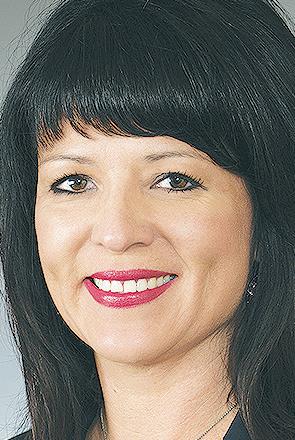
The COVID-19 pandemic confirmed the critical role small businesses play in our daily lives. It sounds cliché, but locally owned small businesses truly are the heart and soul of our cities and towns. The holiday shopping season is a crucial time for small retailers and restaurants that depend on the boost in sales between Thanksgiving and Christmas.
A new year almost always brings an opportunity for a fresh start and renewed ambition to do things better.
In business, that usually boils down to providing customers better products and services faster and at lower cost than competitors. Part of the process must include listening to customers to determine what they actually need and then meeting that need. After all, it does little good to offer the latest and greatest if nobody actually wants what you’re selling.
Not so long ago, it was an American tradition to shop and play at the local mall or small business district downtown. Brick-and-mortar businesses would promote their best deals of the year in hopes of luring shoppers to make a purchase or at least browse their merchandise. Today, online shopping has become the preferred way many Americans shop for holiday gifts. Given the dramatic shifts in the retail environment over the last 20 years, those holiday scenes and traditions are in danger of passing into the realm of nostalgic folklore. The results of recent surveys show that more than 80 percent of shoppers make regular online purchases throughout the year.
Just like the businesses that belong to the group, the Grand Junction Area Chamber of Commerce invariably starts out the new year with a reassessment of the services and resources it provides and how well they match with members needs. Jeff Franklin, the new chairman of the chamber board of directors, personifies this approach in describing what he considers his role for the coming year: listen to members, determine their needs and then meet those needs. It’s a role with which Franklin is familiar as market president of Bank of Colorado.
The process will take on a more structured approach in what the chamber plans as the resumption of a program aptly called Listening to Business. Under the program, business owners participate in in-depth interviews to identify barriers to growth and other problems they encounter.
The new year offers a good time to join the proverbial club.
As an advertiser or reader, what do you need from the Business Times
While business journals traditionally gather and report the relevant news to readers, communication isn’t necessarily a one-way street. That’s especially true as Web sites and e-mail make the dialogue more convenient than ever.
To compete, small business owners have become more innovative in the ways they sell and promote their products and services. An encouraging trend born out of the pandemic is that many small business owners pivoted operating models to include e-commerce platforms or changed product offerings to meet the demands of online consumers. Still, others have brought back the traditions of providing one-on-one assistance to customers and selling locally produced niche items. Cottage businesses have started in record numbers as people realized their dreams of small business ownership could start in their basements and garages.
Good publications don’t exist in a vacuum. They respond to the needs of advertisers and readers. They provide what’s needed.
So what do you need?
Is there additional news coverage that would help keep you informed about local business developments? Are there features that would be interesting or useful? Is there advice that would make your jobs a little easier?
If you’re an entrepreneur and need some advice, consider exploring the tools and resources offered by the U.S. Small Business Administration and its partners, including the Small Business Development Center in Grand Junction. Small business owners also can get involved with such local support organizations as chambers of commerce, business districts and associations.
It’s equally important to ask what you don’t need. With limited time to produce content and limited space in which to publish it, would time and space be better devoted to something else?
The holiday shopping season exerts huge effects. Colorado’s 691,000 small businesses create two out of every three net new jobs and deliver essential goods and services. They employ more than 1.2 million Coloradans, give back to their communities and make the state a better place in which to live.
What’s good? What isn’t? What’s needed? What isn’t?
Let us know. Send us an e-mail. Comment online on the Business Times Web site at www.thebusinesstimes.com. You could even write an old-fashioned letter to the editor if you’d like. Your feedback, both positive and negative, is valued and will be carefully considered.
This holiday season, join us in making purchases from locally owned small business in your city or town. These business owners are the true super stars of our communities and deserve our support, thanks and appreciation. Happy holidays.
Good publications are the result of not only the efforts of their staffs, but also collaborative efforts involving advertisers and readers.
Like any other good business, we want to listen to our customers, find out what they need and then meet those needs.
It’s a new year. Please help us to do so. ✦
Aikta Marcoulier serves as the U.S. Small Business Administration Region VIII administrator. She oversees SBA programs and services in Colorado as well as Montana, North Dakota, South Dakota, Utah and Wyoming. Frances Padilla serves as the SBA Colorado District director and oversees programs and services across the state. For more information, visit www.sba.gov. F
609 North Ave., Suite 2, Grand Junction, CO 81501 TEL (970) 424-5133 • FAX (970) 424-5134
Reach advertising at: publisher@thebusinesstimes.com
Reach the editor at: phil@thebusinesstimes.com.
Subscribe or submit press releases online at www.thebusinesstimes.com
The Grand Valley Business Times, a subsidiary of Hall Media Group LLC, is published twice monthly and distributed throughout Grand Junction, Fruita and Palisade. Advertising rates and deadlines are available upon request. Opinions expressed in this publication are those of the writers and do not necessarily reflect the views of the publisher, editor, staff or advertisers. Copyright © 2015 — All rights reserved.
And for the simplest of reasons. It’s a word made up out of whole cloth because everything anyone claims as misinformation is and can only be, well, INFORMATION no matter how anyone tries to spin it. The “mis,” “dis,” or “fake” is all up to the holder, seeker or receiver of that information.
It’s that time of year when resolutions and prognostications abound. My favorite saying applied to New Year’s resolutions is in saying they’re basically a bunch of promises to break the first week of January. And while I won’t predict a whole lot, I can pretty much accurately nail a few things that without question will make the news. You will see these are pretty, well, predictable:
That’s it. It’s up to you whether the information you’re processing has value, truth or matches your beliefs. No one can, or should, determine it for you. That goes especially for those providing the mass of information available today at breakneck speeds.
cells in a womb human, but a single cell on Mars is life. It’s simply another way to make any life somehow less than making certain lives not worthy of being part of, or taking part in, society.
long run always hurt consumers. Another fact is that unemployment reaches a certain level based on the economy. And while the government might brag the number is low, it’s more than likely the government did something to cause that number being low — and not in a good way. Conversely, when business picks up, it’s because the people who need to buy widgets who were not buying widgets because the economy was contracting due to natural (or unnatural, government caused) reasons, decided we better buy some widgets. The government had nothing to do with this.
Here’s a good summary in how I first look at information when it hits my attention. Along with going to the other end of the spectrum, I look at what the infobots AREN’T saying.
■ Prediction one: There will be some sort of weather event, natural disaster or heinous occurrence where someone will be interviewed and say the following: “I’ve never seen anything like that in my lifetime.” It’s as if this person is a required attendee at every news reporting event. While I understand most people’s perspective can indeed be limited by, or contained within, their own personal experiences, it is too much to ask to consult some historical perspective before saying such a thing? Yes, this response can apply to some events. But when it comes to weather and natural disasters, I’m pretty sure this is simply history repeating itself. Same as it has for millions and millions of years. More important, the planet made it! What didn’t were certain species. How’s that for perspective?
“Secrecy is the keystone to all tyranny. Not force, but secrecy and censorship. When any government, or church for that matter, undertakes to say to its subjects, ‘This you may not read, this you must not know.’ The end result is tyranny and oppression, no matter how holy the motives. Mighty little force is needed to control a man who has been hoodwinked in this fashion; contrariwise, no amount of force can control a free man, whose mind is free. No, not the rack nor the atomic bomb, not anything. You can’t conquer a free man; the most you can do is kill him.” — Robert Heinlein.
Let’s get back to secrets by talking about a topic we’re not allowed to talk about — unless of course the topic can be tied to Christian conservatives — mass shootings. We’ve had two recent mass shootings. Both, as usual, made immediate headlines with the appropriate, righteous condemnation. But what else did these two shootings immediately come with? The ever-present rush to judgment, stating the shooters must be disgruntled, white, Christian conservatives. Without getting into specifics, they weren’t. I wonder as I write this column how many folks really know the profile of these two shooters? The shootings aren’t in the news any longer. Why? You know already, but you aren’t allowed to talk about that either. Because stating the facts would make one a conspiracy theorist based in our controllers’ ideas and demands in how we think about race and gender.
Facts are scary, disallowed, unmentioned things when it comes to tyrants because they’e true — many times eternal truths. The last things tyrants want citizens to have are facts or the truth. When was the last time you listened to a “leader” demanding you believe what you’re hearing and not what you’re seeing and thought, “Wow, I should blindly follow them?” If you have, perhaps you’re a true misinformation conspiracy theorist.
So really, “misinformation” is about controlling information. Misinformation is simply a term they’ve come up with to control what you’re allowed to hear and say and what conclusions you’re allowed to come to given the controlled information they allow you to hear.
■ Prediction two: When it comes to a crime or something that occurs between humans, the other required attendee at all news reporting events is the person who says this: “They we’re just the nicest people, and in no way did I see something like this coming.” Exactly. No one does most of the time when it comes to neighbors and acquaintances. People should be surprised at what goes on from time to time in their neighborhoods, towns and with people they know because people are good. And for the times that they shouldn’t be shocked — like with politicians, repeat offenders and terrorists — where’s the interview that says, “This doesn’t surprise me in the least.”
Just look at what happens to citizens who don’t come to the conclusions those in control of our language and political direction demand. They’re labeled “conspiracy theorists.” Without getting into just how many of the “theories” have been proven true over the past several years, let’s look at what this label actually does to people who dare to believe or understand information differently than the folks in charge of the Ministry of Truth.
■ Prediction four: In keeping with things the government does, I predict the government will manipulate the numbers to make the claim the economy is getting better because of how hard it is working to help all of us “working Americans.” Now you might say, “Craig, you always say this about President Obama because you don’t like him.” You’re right in a sense. I don’t know the man, but what I know of him and his thinking, I don’t like it or him one iota. Before you go off, however, I didn’t like President Bush and his bailouts, stimulus and his abandoning the free market to save the free market. And I don’t know him either. What the government does, and the only thing it can do, is hurt the economy. Unless it does nothing or put criminals in jail instead of partnering with them, nothing the government does will help. Always look at it this way, whatever the government says it is doing, whatever the name of the law it is passing, or whatever the name or goal of the bureaucracy it is presenting to the people, expect the polar opposite to occur.
I guess what I’m saying is that perhaps it’s time to get out of our own perspective. There’s plenty of history books and historical research out there to begin to understand that all of this has happened before. And it will again, whether the topic is people or government.
Quick example: President Joe Biden saying the inflation rate is 0 percent because it was at the same 8 percent rate as it was the month before. Here’s what he’s not telling you. Inflation rates are based on a given month versus the previous year for the same month. So, if the inflation rate in a month was 8 percent, it means things on average, since a lot of what they track aren’t really necessities, cost 8 percent more than last year in the same month. Worse, those same things cost 20 percent or more than they did from two years before based on that month’s PREVIOUS year’s inflation rate.
■ Prediction three: Something good will happen economically, and the government will take credit for it. The most recent example is gas prices, where people ask me why I won’t credit the president for low gas prices. My answer is simple: Government never makes the price of something go down and simply takes credit for good news. Gas pricing is subject to many global factors. Now there are government answers to addressing some of them to keep prices stable for Americans, but our government has none of them in place. The only things it has in place in the
After all, who believes “crazy” conspiracy theories? The key word is the first word. They’re obviously insane individuals. Who are those insane individuals? You and me and those of us who dare to think for themselves. As Dave Chapelle once stated, the act of calling someone crazy is dismissive. It’s equal to calling them not human. Then again, it’s to be expected from those who won’t call the growing group of
The best recommendation is to find some books or try that whole Google thing. There’s a lot of information on the Great Depression. The truth is it wasn’t even a good one until the government got involved. There’s also plenty of research on the medieval warm period when the planet was much warmer than today with a whole lot less people (and warmer well before man was here at all). And yep, people have been killing other surprised people since history was first written.
In laymen’s terms, the $20 widget you bought in 2020 costs about $26 today. That’s a 30 percent increase, and that’s being generous. It’s worse on necessities. Just look at your natural gas bill. Rates have nearly doubled over the past year and are set to go up again. Then again, our leaders don’t make energy a part of the Consumer Price Index as they should. Too many folks might get crazy, conspiracy ideas about inflation.
For tyrants, that beats knowing the truth about inflation, or anything, any day.
Maybe some research will help stop all of these trends. Otherwise, we’ll be saying we’ve never seen anything like it in our lives. And not in a good way.
Craig Hall is owner and publisher of the Business Reach him at 424-5133 or publisher@thebusinesstimes.com.
Craig Hall is owner and publisher of the Business Times. Reach him at 424-5133 or publisher@thebusinesstimes.com.

“Here comes Santa Claus, here comes Santa Claus.” The familiar refrains of Christmas carols herald the holiday season. It’s a magical time of year with special foods prepared, gifts selected and wrapped and the house and perhaps even the yard decorated. It’s especially delightful to watch children eagerly await the arrival of Santa Claus on Christmas Eve.
Children aren’t the only ones who believe in Santa Claus, though. Voters often elect politicians who tell them what they want to hear and promise them free stuff. Adults as well as children allow themselves to be deceived into thinking they’ll get something for nothing. Promises of free college, debt forgiveness, health care for all, guaranteed income, individual and corporate welfare programs, free cell phones, union protection and a myriad of other assurances entice voters to vote for Santa Claus.
Young children never question the source of gifts from Santa Claus As children age and become more aware of how the world works, they question how this giver of gifts can be all things to all children. Eventually, the secret is out. There is no Santa Claus. Someone spent money so the gifts would appear on Christmas morning.
Adults taken in by the free stuff promised by politicians seem to be uninterested in how this gifting is possible. They just want it and vote for it. A rudimentary understanding of economics would reveal receiving free stuff is impossible. Someone always pays.

Just as the child’s Christmas gift from Santa must be paid for by someone, free stuff given away by politicians is paid for by someone else — namely taxpayers. The United States has printed money for years because Congress and presidents have spent more money than taxes generate. The staggering debt is unsustainable, yet Santa Claus seems to remain alive and well in the minds of voters.
Writing for the Foundation for Economic Education, Sandy Ikeda said the economist Ludwig von Mises called the use of coercion to redistribute
wealth according to someone’s political preferences the Santa Claus principle. Ikeda called it “robbing Peter to stuff Paul’s stocking.”
The United States Constitution established a constitutional republic with democratically elected representatives to represent “we the people.” The system was brilliantly designed.
Avarice corrupts even the best plans.
Alexander Fraser Tytler, a Scotsman lecturing on democracy in the late 1700s described the progression. “A democracy cannot exist as a permanent form of government. It can only exist until the voters discover that they can vote themselves largesse from the public treasury. From that moment on, the majority always votes for the candidates promising the most benefits from the public treasury with the result that a democracy always collapses over loose fiscal policy, always followed by a dictatorship.”
Although Christmas is the season for giving, someone always pays for Santa’s gifts. Always.


Phyllis Hunsinger is founder of the Freedom & Responsibility Education Enterprise Foundation in Grand Junction. The FREE Foundation provides resources to students and teachers in Western Colorado to promote the understanding of economics, financial literacy and free enterprise. A former teacher, principal and superintendent, Hunsinger wrote “Down and Dirty: A ‘How To’ Math Book.” Reach Hunsinger at phyllis@free-dom.us.com. For more information about the FREE Foundation, log on to the website located at www.free-dom.us.com. F


Adults taken in by the free stuff promised by politicians seem to be uninterested in how this gifting is possible. They just want it and vote for it. A rudimentary understanding of economics would reveal receiving free stuff is impossible.
The Bray Cares Foundation awarded eight grants worth a total of $35,000 to address housing-related needs in Mesa County.
Bray & Co. Real Estate based in Grand Junction established the Bray Cares Foundation and partners with the Western Colorado Community Foundation to raise funds and make grants to nonprofit organizations. Since its inception, the foundation has awarded a total of $110,000 in grants.
The latest recipients are:
n Foster Alumni Mentors to offer housing support to youth aging out of foster care.
n Grand Valley Catholic Outreach for its stop eviction rental assistance program.
n Habitat for Humanity of Mesa County for flooring for two homes.
n HomewardBound of the Grand Valley for general support of its homeless shelter.
n Joint Development Associates for its Grand Valley resettlement program.
n Joseph Center for its grant assistance program for families in transition.
n Karis for a commercial washer and dryer at its Laurel House Apartments.
n Mesa County Retired and Senior Volunteer Program for projects that help seniors stay in their homes.
Bray & Co. provides residential and commercial real estate as well as property management services with offices in Grand Junction and Rifle. For more information, call 242-3647 or visit www.brayandco.com.

The Mesa County School District 51 Foundation will give away more than 5,000 used Chromebook computers on a first-come, first-served basis.
Additional distribution sessions are set for 3 to 6 p.m. Dec. 8 at R5 High school in Grand Junction, 2 to 6 p.m. Dec. 9 at the Mesa County Libraries branch in Collbran and 9 a.m. to 1 p.m. Dec. 10 at the Mesa County Libraries central library in Grand Junction and branch locations in Clifton and Fruita.
The Chromebooks were retired from classroom use, but still offer usefulness and come with reloaded operating systems. There’s no guarantee, however, of their remaining lifespans.
The school district recently received a $3.5 million grant from E-Rate that will reimburse the district for the purchase of 9,000 new Chromebooks and 1,500 jet packs offering wireless internet access.
For additional information, call 254-5108 or visit the website located at https://d51foundation.org.

Friends of the Mesa County Libraries will host a holiday book sale through Dec. 17.
The sale is set for 9 a.m. to 2 p.m. Fridays and Saturdays at the First Congregational Church, located at 1425 N. Fifth St. across from Grand Junction High School. All sales are cash only.
Proceeds from the sale will support a variety of services and support offered at library branches throughout Mesa County
The Business Times welcomes submissions for free publication in Business Briefs. Email items to phil@thebusinesstimes.com or submit a news release online at www.thebusinesstimes.com.
HopeWest now accepts donations of cryptocurrencies to help fund services for the aging, seriously ill and grieving in Western Colorado.
The move offers contributors with cryptocurrency portfolios the opportunity to support the Grand Junction-based organization in a tax-efficient way. The U.S. Internal Revenue Service classifies cryptocurrencies as property, meaning they’re not subject to capital gains tax and are deductible on income tax returns.
HopeWest will work with The Giving Block, which equips nonprofit organizations with the tools and techniques to raise funding with cryptocurrencies.
“We are excited for the opportunity to engage with a new generation of philanthropists and show them the impact their generosity has on HopeWest families,” said Deb Horwitz, senior vice president and chief development officer at HopeWest.
For more information about donating cryptocurrencies to HopeWest, visit https://hopewestco.org/donate-crypto.
The Food Bank of the Rockies Western Slope has moved into the new Etkin Family Distribution Center in Grand Junction.
Located at 698 Long Acre Drive, the new facility offers more than 50,000 square feet. At nearly twice the size of the former facility in Palisade, the warehouse and distribution center is expected to enable Food Bank of the Rockies to provide 62 percent more meals annually.
While volunteers and partners are allowed inside, the new facility isn’t yet open to the public. A grand opening will be scheduled in coming months. Food distribution continues through mobile pantries and hunger relief partners.
For more information about Food Bank of the Rockies Western Slope and food assistance, visit https://foodbankrockies.org or call 464-1138.
Grand Valley Transit will offer free rides on all fixed routes on Fridays and Saturdays through December.
The promotion is designed to show appreciation to current passengers, welcome new passengers and help families during the holiday season.
Grand Valley Transit will conduct a food drive through Dec. 12. Participants can drop off canned goods and other non-perishable food items at transfer facilities located at 535 S. Sixth St. and 612 24 1/2 Road in Grand Junction.
For more information about Grand Valley Transit, visit the website at https://gvt.mesacounty.us. F
St. Mary’s Hospital and Medical Center in Grand Junction has once again received an A for its efforts to ensure patient safety.
The medical center, part of Intermountain Healthcare, received an A rating from the Leapfrog Group in its fall 2022 hospital grades report.
“This national distinction celebrates our caregivers and their achievements in ensuring our patients receive the best possible care,” said Mark Korth, president of the Peaks Region of Intermountain Healthcare.
“As we continue to enhance our safety mission, we are united in our commitment to health care safety as we advance our mission of helping people live the healthiest lives possible.”
Leapfrog Group has assigned A, B, C, D and F letter grades to general hospitals in the United States since 2012. The rating takes into account more than 30 measures of publicly available information to produce a single grade.
“I applaud the hospital leadership and workforce for their strong commitment to safety and transparency,” said Leah Binder, president and chief executive officer of the Leapfrog Group. “An A safety grade is a sign that hospitals are continuously evaluating their performance so that they can best protect patients. Your hospital team should be extremely proud of their dedication and achievement.”
St. Mary’s was among a total of six Intermountain Healthcare hospitals in Colorado and Montana to receive A grades. Based in Utah, Intermountain Healthcare operates a total of 33 hospitals in seven states. For more information, visit https://intermountainhealthcare.org.




Nina Anderson, owner of the Express Employment Professionals staffing agency in Grand Junction and Montrose, has joined the Colorado Workforce Development Council.
Colorado Gov. Jared Polis appointed Anderson to a three-year term on the council. She’s the only member from the Western Slope.
“This is a great opportunity to highlight the things we’re doing well in Western Colorado and further secure the support to help us do even better,” Anderson said. “I look forward to serving.”
The council works to sustain and improve a skillsbased talent development network that meets the needs of employers, workers, job seekers and students.
Anderson brings to the position more than 30 years of experience in human resource management. She’s a member and former chairwoman of the Mesa County Workforce Development Board as well as a member of the Western Colorado Human Resource Association and Grand Junction Area Chamber of Commerce.
Express Employment Professionals helps fill short- and long-term assignments for a variety of office, professional, skilled and light industrial positions. For additional information, call 242-4500 or visit the website located at https://www.expresspros.com/grandjunctionco.

Hillary Daniels has joined the Fruita Area Chamber of Commerce as community development director.

Daniels plans chamber events and works to find out what matters most to the community.
She previously worked for the Rocky Mountain Public Broadcasting Service and KAFM Community Radio.
She holds a bachelors degree in mass communication from Colorado Mesa University in Grand Junction.
The Business Times welcomes submissions for free publication in Business People and the Almanac calendar of events. Email submissions to phil@thebusinesstimes.com or submit a news release online at www.thebusinesstimes.com.
Alexis Johnson, Brianna Shelton and Patty Kim Taylor were among the latest winners of statewide awards recognizing apprentices, programs and employers.
Johnson, Shelton and Taylor all work as apprentices at the Western Colorado Area Health Education Center in Grand Junction. The center provides community based training for health care providers through community and academic partnerships.
St. Mary’s Hospital and Medical Center in Grand Junction was among four employers recognized in the 2022 Colorado Apprenticeship Awards program.
Joe Barela, executive director of the Colorado Department of Labor and Employment, praised the winners. “We are proud to recognize this year’s award winners for their achievement, innovation, fresh thinking and values that will raise the bar on Colorado’s economy,” Barela said. “This year’s winners have proven how powerful the registered apprenticeship model can be, and I am eager to see the possibilities that await us in the new year. ”
A total of 22 individuals, employers and organizations were honored at the fifth annual Colorado Apprenticeship Awards.
The program is a collaboration of the Colorado Department of Labor and Employment as well the Business Experiential Learning, Commission, CareerWise Colorado, Colorado Department of Higher Education, Colorado Workforce Development Council, Interagency Advisory Committee on Apprenticeship and State Apprenticeship Council. F
She also serves as a campaign cabinet member and workplace ambassador for United Way of Mesa County and participates in the ANB Bank volunteer program.
Dec. 8
n Fruita Area Chamber of Commerce business after hours, 5:30 to 7:30 p.m., Alpine Bank, 125 N. Park Square. Admission $5 for chamber members, $10 for others. https://fruitachamber.org or 858-3893
Dec. 9
n Young Professional Network of Mesa County Christmas party, 6 to 8 p.m., Springhill Suites, 236 Main St., Grand Junction. www.ypnmc.org Dec. 12

n Grand Junction Area Chamber of Commerce economic outlook luncheon, noon to 1:30 p.m., Mesa County Workforce Center, 512 29 1/2 Road, Grand Junction. Admission $25 for chamber members, $30 for others. https://gjchamber.org or 242-3214
Dec. 13
n Bookkeeping boot camp, 9 a.m. to 2 p.m., Business Incubator Center, 2591 Legacy Way, Grand Junction. Admission $75, which includes lunch. https://gjincubator.org or 243-5242 Dec. 14
n Young Professional Network of Mesa County lunch conversation with Cameron Cunningham, noon to 1 p.m., Reverent Rhythms, 3080 Hoover Drive, Grand Junion. www.ypnmc.org n Grand Junction Area Chamber of Commerce Networking at Noon, noon to 1 p.m., Rockslide Brew Pub, 400 Main St. Admission $20 for chamber members, $23 for others. 242-3214 or https://gjchamber.org.
n Western Colorado Human Resource Association end of year celebration, 3:30 to 6:30 p.m., Venue at Fischer’s, 625 24 1/2 Road, Grand Junction. WCHRA members attend at no additional charge. Others pay $10. www.wchra.org
n Palisade Chamber of Commerce business after hours, 5:30 to 7 p.m., Orchard River View, 3926 U.S. Highway 6 & 24. Advance admission $5 for members, $8 for others. Admission at the door $6 for members, $10 for others. 464-7458 or www.palisadecoco.com Dec. 16
n Coffee Club free networking meeting, 9 to 10 a.m., FWorks coworking space, 325 E. Aspen Ave., Fruita. 858-3893 or https://fruitachamber.org
n Fruita Area Chamber of Commerce Welcome Thursday Friends networking luncheon, noon to 1 p.m. Dec. 22, Qdoba Mexican Eats, 401 Jurassic Ave., Fruita. https://fruitachamber.org or 858-3893
“ANB Bank is a true community bank that provides excellent customer service on a personal level that extends outside of the bank,” Stack said. “I am proud to work with such caring and giving people that invest in our great communities through volunteerism.”
Stack brings to her new role more than 20 years of banking experience, including her tenure with ANB Bank and knowledge of treasury management products and services to help business customers.
“Angela’s banking background and her positivity help create meaningful relationships with her teammates and our customers,” said Vance Wagner, ANB Bank regional president. “She is an asset to our community.”
A member of the Sturm Financial Group, ANB Bank operates a total of 29 banking centers in Colorado and Wyoming and has more than $3.1 billion in assets. For more information, visit www.ANBbank.com.
n Fruita Area Chamber of Commerce business after hours, 5:30 to 7:30 p.m. Jan. 12, Fruita Community Center, 324 N. Coulson St. Admission $5 for chamber members, $10 for others. https://fruitachamber.org or 858-3893
n Coffee Club free networking meeting, 9 to 10 a.m. Jan. 20, FWorks coworking space. 858-3893 or https://fruitachamber.org



